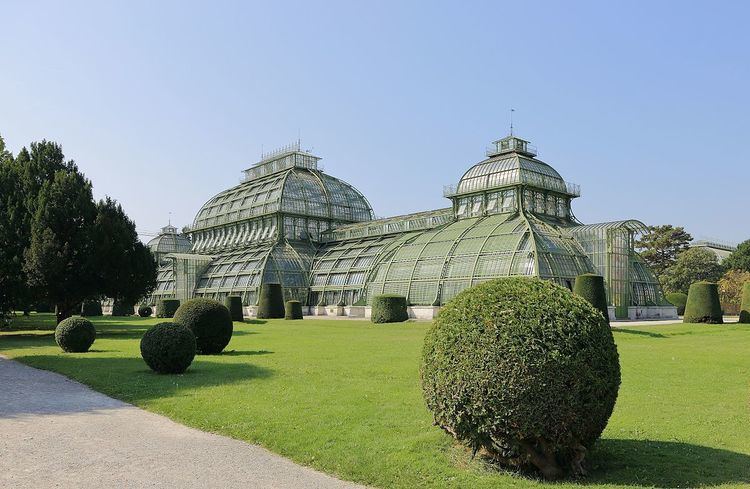Opened 1882 Architect F von Segenschmid | Phone +43 1 8775087 | |
 | ||
Hours Open today · 9:30AM–5PMTuesday9:30AM–5PMWednesday9:30AM–5PMThursday9:30AM–5PMFriday9:30AM–5PMSaturday9:30AM–5PMSunday9:30AM–5PMMonday9:30AM–5PMSuggest an edit Similar Schönbrunn Palace, Wüstenhaus Schönbrunn, Tiergarten Schönbrunn, Wagenburg, Belvedere - Vienna | ||
Palmenhaus scho nbrunn wien
The Palmenhaus Schönbrunn is a large greenhouse in Vienna, Austria, featuring plants from around the world. It was opened in 1882. It is the most prominent of the four greenhouses in Schönbrunn Palace Park, and is also among the largest botanical exhibits of its kind in the world, with around 4,500 plant species.
Contents
- Palmenhaus scho nbrunn wien
- Vienna wien barockgarten und palmenhaus sch nbrunn
- History
- Architecture
- Notable features
- References
Vienna wien barockgarten und palmenhaus sch nbrunn
History
Several forerunners were built in the Palace Park in the 18th and 19th centuries, under Emperors Francis I and Joseph II. The present building was opened in 1882, under Franz Joseph I. Since 1918 it has been run by the Bundesgärten (Federal Gardens).
A heavy bomb attack on Schönbrunn Palace in February 1945 destroyed most of the glazing of the Palmenhaus. Many plants died, although some were saved by being transferred to the nearby Sonnenuhrhaus. The rebuilding began in 1948, and the Palmenhaus was reopened in 1953.
The building was closed to the public in 1976 as a safety measure following the collapse of the Reichsbrücke. Renovations were carried out between 1986 and 1990.
Architecture
Built of steel, the Palmenhaus is 111 metres long, 28 metres wide and 25 metres high, and has 45,000 glass tiles. There are annexes on the north and south sides, serving as a coldhouse and a hothouse respectively.
